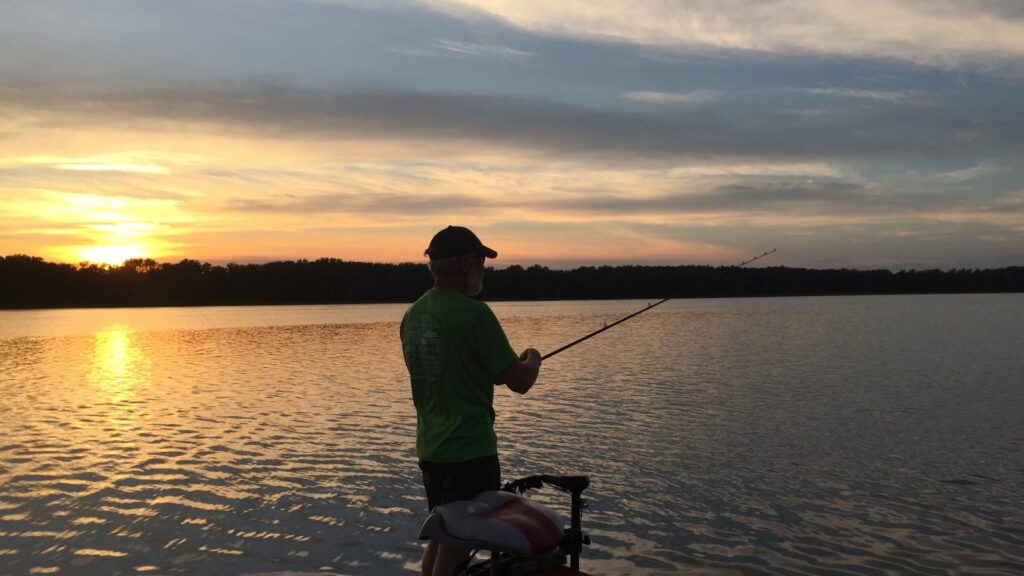Turning the Tide: How to Improve Your Fishing Performance
Fishing has been a human pastime for generations upon generations, and it isn’t hard to see why! Fishing offers a unique and fulfilling experience that allows us to reconnect with nature, challenge ourselves physically and mentally, and create lasting memories. But like any skill or hobby, it takes practice and knowledge to continuously improve your fishing success. Ready to reel in a great catch? Let’s get started!
Understanding the Basics
Before we dive into advanced techniques, we need to have a solid understanding of the fundamentals of fishing. This includes knowing how to properly set up your equipment, understanding different types of lures and baits, and being familiar with basic fishing knots. Taking the time to learn these basics will not only make you a more efficient angler, but it will also help prevent any accidents or mishaps on the water.
Knowing Your Target Species
Different species of fish have unique behaviors, habitats, and preferences when it comes to feeding. Understanding these factors is crucial in determining the best techniques and locations to target your desired catch. Researching your target species beforehand can greatly improve your chances of success on the water.
Some common fish species that anglers often target include bass, trout, salmon, catfish, and walleye. Each of these species has its own unique characteristics and behaviors, so to get any kind of success you need to familiarize yourself with them before hitting the water. For example, bass are known for being aggressive predators that prefer lures over live bait, while catfish are bottom-feeders that are attracted to strong-smelling baits. Knowing these differences can help you choose the right approach and increase your chances of a successful catch.
Paying Attention to Weather and Water Conditions
Weather and water conditions play a significant role in the behavior of fish. Knowing how these factors affect your target species can give you an advantage when planning your fishing trip. For example, certain fish may be more active during cloudy or overcast days, while others may prefer calmer waters.
There are also certain weather conditions that can make fishing more difficult or even dangerous. Thunderstorms, high winds, and rough waters can all pose a risk to anglers. No matter what type of fish you’re after, be sure to always check the weather forecast before heading out and to have a plan in place for potential changes in weather.
Using the Right Equipment
Having the correct equipment for your target species and fishing location can make a huge difference in your performance. This includes selecting the right rod, reel, line, and tackle for the type of fish you are targeting. Don’t forget to regularly maintain and replace your equipment as needed to ensure optimal performance.
Taking care of your fishing equipment is crucial to maintaining its longevity. After each use, make sure to clean and dry your rods, reels, and lures to prevent rust and damage. Be sure to regularly inspect your line for any signs of wear or tangles, as well as replace it if needed. Storing your equipment properly in a dry and secure location can also help prolong its lifespan; this includes rods, boats, and any 6th Sense Baits you may have. By taking care of your equipment, you can ensure that it will always be in top condition for your next fishing adventure.
Practicing Proper Casting Techniques
Proper casting techniques not only help you cover more water and reach areas where fish may be hiding, but they also prevent tangles and snags in your line. Make sure to practice casting in different directions and using different techniques to find what works best for you.
Being Patient and Observant
Fishing requires patience and observation. Pay attention to the behavior of your target species, as well as any signs of activity such as movement on the water’s surface or changes in the behavior of nearby birds. Don’t be afraid to change your tactics if you’re not getting any bites—sometimes a small adjustment can make all the difference.
As with any hobby or skill, patience and resilience are key to improving your fishing performance. Remember that not every day on the water will result in a successful catch, and sometimes it takes multiple attempts before landing a trophy fish. Instead of getting frustrated or giving up, use these moments as opportunities to learn and grow as an angler.
Staying Safe and Responsible
Lastly, be sure to always prioritize safety while fishing, no matter how skilled you may be. This includes wearing appropriate clothing and gear for the weather conditions, practicing proper boat and water safety, and being mindful of any conservation laws or regulations in your area.
If you enjoy fishing with your family, it’s your responsibility to ensure everyone’s safety on the water. When fishing with kids, be sure to educate them about how to safely handle equipment and fish, as well as the importance of wearing a life jacket at all times. It may also be helpful to bring along extra snacks, drinks, and sunscreen to keep everyone comfortable and hydrated. And always be sure to supervise children closely, especially near water. Remember, it’s never too early to teach young anglers about responsible fishing practices so they can continue to enjoy this hobby for years to come.
Fishing is a skill that requires knowledge, patience, and practice. By understanding the basics, knowing your target species and their behaviors, paying attention to weather and water conditions, using the right equipment, and practicing proper techniques, you can greatly improve your fishing performance. And don’t forget to stay safe and responsible while enjoying this beloved pastime. Next time you head out on the water, remember these tips and watch as your fishing success turns the tide. Have fun out there!

مؤشرات الأسواق العالمية مباشرة